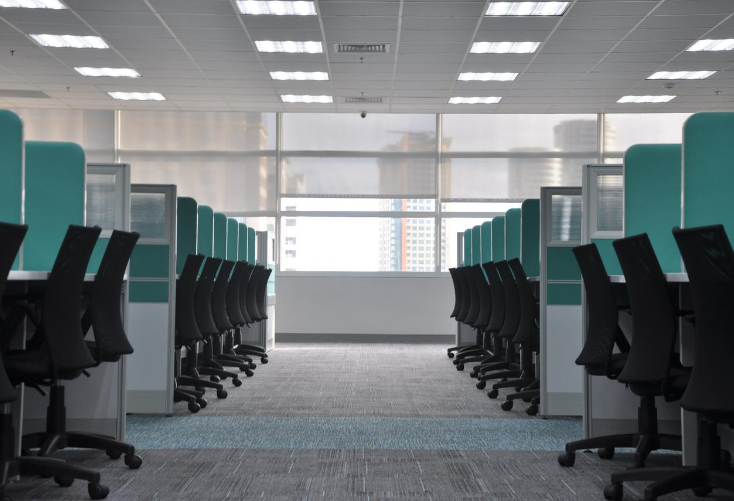Hand selected flexible workspace news from the most reliable sources to keep you ahead of the pack. We find all the latest news, so you don’t have to. Morning and afternoon updates. Stay in the know.
- Coworking Space Could Be The Winner As Companies Adopt Hybrid Work Models NEW
- The Executive Centre Reports Revenue Growth in the First Half of 2020 NEW
- ‘No Plans’ for Many Large Firms to Return to the Office NEW
- For Remote Work To Work Companies Need To Support Employees And Focus On Digital Transformation
- Knotel’s Legal Troubles Continue To Mount
- Is Co-living Part Of The Future Of Remote Work?
Coworking Space Could Be The Winner As Companies Adopt Hybrid Work Models
While some companies have welcomed back a percentage of their staff back into the office, others continue to encourage workers to work remotely.
What does this mean for the office? More importantly, what does this mean for coworking and flexible workspaces?
As the uncertainty around the pandemic and the return to the office continues, it seems like organizations will increasingly adopt a hybrid work model, where they have employees come in and work remotely on a weekly or monthly basis.
Some believe that hybrid work models present an important opportunity for coworking spaces. For one, many people have realized that working from home is not optimal and many are eager to return to an office setting (even if it is not their company’s headquarters). Another reason is loneliness and alienation, and coworking spaces can provide a middle ground for companies that want to keep their employees’ mental health in check, while also keeping them engaged and motivated.

The Executive Centre Reports Revenue Growth in the First Half of 2020
The Executive Centre (TEC) has reported strong revenue growth in the first six months of 2020 across Asia Pacific, despite COVID-19.
The leading flexible office provider in the APAC market reported 5.3% year-on-year revenue growth to US$119.6 million for the first six months of 2020, mainly due to steady cash flow from existing clients. It also reported strong demand.
“We have seen stronger demand coming from MNCs and domestic corporates since April across the Greater Bay Area and South-East Asia which helped to drive sustainable revenue growth and profitability in the first half of the year,” said TEC Founder and CEO, Paul Salnikow.
Looking ahead to the rest of 2020, Salnikow added that TEC believes “more companies will have core and satellite offices, with some employees working closer to home.”

‘No Plans’ for Many Large Firms to Return to the Office
A survey by the BBC of 50 businesses across the UK has revealed that almost half currently have no plans to return their staff to the office.
However, 20 have opened their offices for staff who are unable to work from home.
One of the biggest obstacles in getting staff back to the office is physical distancing, with many large firms saying they could not see a way of accommodating large numbers of staff during COVID-19.
Many companies are offering flexibility to those who want to return, particularly in the banking and finance sectors.
Out of 50 firms, the BBC survey revealed:
- 24 companies have no plans to return staff to the office yet
- 20 firms have gradual plans to reopen office space
- 3 firms have already brought staff back, with no plans for more
- 20 have opened offices or staff who can’t work from home

For Remote Work To Work Companies Need To Support Employees And Focus On Digital Transformation
New survey data revealed that many workers are unprepared for the challenges associated with working from home. This amidst a trend of large companies announcing that they will allow employees to work from home on a long-term or even permanent basis.
The coronavirus pandemic has accelerated the shift towards new ways of working. While there have been many positive effects to these changes, there are various barriers and challenges that still need to be overcome.
One key concerning element of managing remote teams is the mental health of employees. A recent survey found that most remote workers are anxious, stressed out, and burnt out. Another key area that organizations need to focus on is their digital transformation efforts.
For remote work arrangements to work in the short and long-term, organizations need to make sure that they are supporting their employees and providing them with access to tools and resources that can support their work and wellbeing.

Knotel’s Legal Troubles Continue To Mount
Knotel appears to be going through a rough patch with its landlords in New York City. The flexible workspace provider was hit with a new lawsuit over unpaid rent early this week.
According to court documents, Knotel now owes property owners nearly $2.8 million.
The latest suit was filed by CIM Group; in it it accused Knotel of unpaid rent for its 28,820 square foot location at 5 Hanover Square. Knotel has not paid rent since April.
The total accumulated backrent reached by August 2020 alunts to $554,796.47 according to the lawsuit. The flexible workspace company only paid $213,733.50 this month; as a result, CIM Group is seeking $341,062.97 in the lawsuit.
Knotel signed its lease at 5 Hanover in 2018.

Is Co-living Part Of The Future Of Remote Work?
Remote work is increasingly becoming a long-term solution for many organizations and employees. Even as governments lifted lockdowns, organizations have opted to allow workers to continue working remotely.
While working from home offers various benefits, it also poses its own set of challenges. In some cases, many workers have found that their home conditions are far from ideal to do work. In Bengaluru, the rise in remote work has led to urban slums where migrant youth live and work from buildings that are densely populated and do not meet basic safety norms.
Without a doubt, this has impacted the work and wellbeing of young workers.
The good news is that there seems to be an attractive and viable solution: co-living. Co-living spaces can offer workers access to decent housing and work environments. Not only will this improve the productivity levels of workers, but it can also work wonders for their wellbeing and health.



 Dr. Gleb Tsipursky – The Office Whisperer
Dr. Gleb Tsipursky – The Office Whisperer Nirit Cohen – WorkFutures
Nirit Cohen – WorkFutures Angela Howard – Culture Expert
Angela Howard – Culture Expert Drew Jones – Design & Innovation
Drew Jones – Design & Innovation Jonathan Price – CRE & Flex Expert
Jonathan Price – CRE & Flex Expert















